How AEO Can Help With Zero-Click Searches: Reclaiming Visibility in 2025
Search is changing. When 58.5% of Google searches in the US end without a single click, it’s time to rethink your digital marketing strategy. This isn’t just a minor trend—it’s a fundamental shift in how users interact with search engines, and it’s only accelerating.
For marketing professionals, this zero-click revolution presents an existential challenge: How do you maintain visibility when users get answers without ever visiting your website? The answer lies in Answer Engine Optimization (AEO)—a strategic approach that helps your brand thrive even when traditional clicks disappear.
Key Takeaways
- Zero-click searches now dominate the search landscape with 58.5% of Google searches in the US ending without a click, reaching 65% globally in 2024 and projected to exceed 70% by 2025.
- Answer Engine Optimization (AEO) extends traditional SEO by focusing on visibility in zero-click environments through question-focused content, structured data implementation, and multi-format optimization.
- Structured data implementation is fundamental to AEO success with FAQPage, HowTo, LocalBusiness, Product, and Event schema types being particularly effective for appearing in featured snippets and knowledge panels.
- Question optimization increases visibility in zero-click environments by researching common questions, providing direct answers within the first 50-100 words, clustering related questions, and using conversational language.
- Measuring AEO success requires new metrics beyond clicks including SERP feature tracking, brand impression data, brand search volume, click-independent conversions, and share of voice.
TABLE OF CONTENTS:
Understanding Zero-Click Searches: The New Normal
Zero-click searches occur when users get their answers directly on the search engine results page (SERP) without clicking through to any website. This happens through featured snippets, knowledge panels, direct answers, and increasingly, AI-generated overviews.
The trend is accelerating at a remarkable pace. Zero-click searches accounted for 65% of all Google searches globally in 2024, up from about 50% in 2019, and are projected to surpass 70% in 2025. On mobile devices, the situation is even more pronounced, with over 75% of mobile Google searches resulting in zero-click outcomes in 2024.
This shift is driven by multiple factors:
- Google’s increasing ability to extract and present direct answers
- The rise of voice search and mobile usage
- AI-powered search features that synthesize information
- Users’ growing expectation for immediate answers
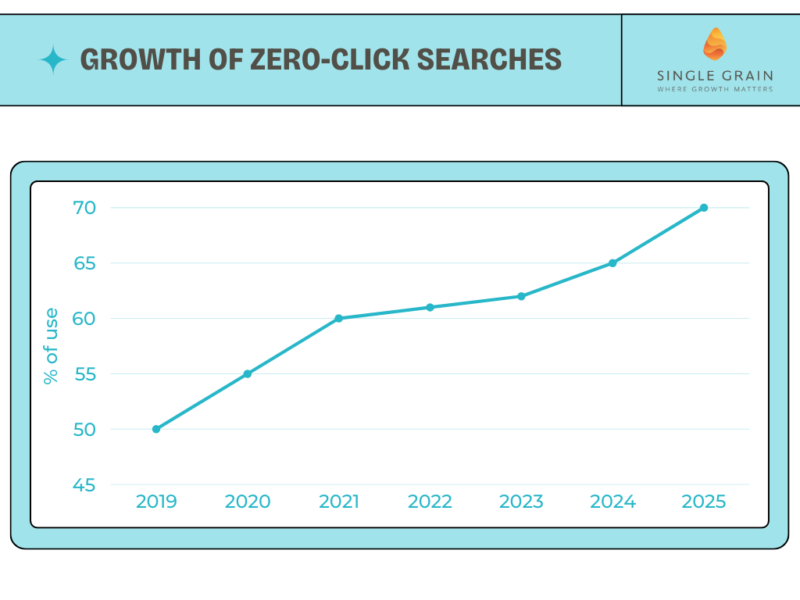
For businesses, this creates an urgent dilemma: when users don’t need to visit your website to get information, how do you maintain visibility and drive value?
What is AEO and How It Differs from Traditional SEO
Answer Engine Optimization (AEO) is a strategic approach focused on positioning your content as the source of direct answers in search results. While traditional SEO aims to drive users to your website, AEO acknowledges that many users will never click through—and adapts your strategy accordingly.
| Traditional SEO | Answer Engine Optimization (AEO) |
|---|---|
| Focus on driving website traffic | Focus on visibility in zero-click environments |
| Broader keyword targeting | Question-focused content optimization |
| General content structure | Structured data implementation (Schema.org) |
| Measured by traffic and rankings | Measured by SERP feature appearances and brand impressions |
| Primarily text-based optimization | Multi-format optimization (voice, visual, text) |
AEO doesn’t replace SEO—it extends it. While traditional SEO remains essential for driving traffic, AEO ensures your brand maintains visibility even when users don’t click. This dual approach has become increasingly important as search habits evolve.
“The distinction between search engines and answer engines is blurring,” notes Eric Siu, CEO of Single Grain, “and brands that adapt to this new reality will gain significant advantages in the coming years.” This shift requires marketers to reconsider how they structure, format, and deliver content.
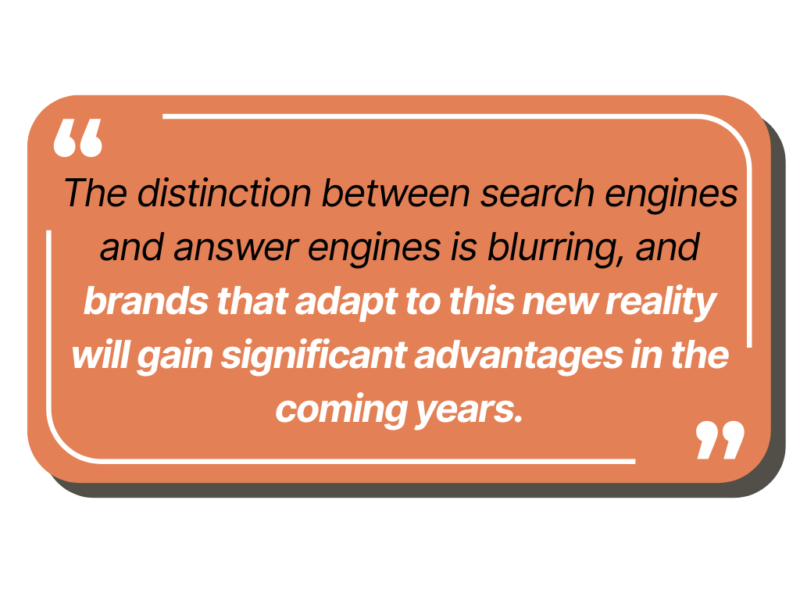
How AEO Can Help with Zero-Click Searches: The Data-Backed Case
The evidence for AEO’s effectiveness in combating zero-click challenges is compelling. 60% of US searches in 2024 ended with zero clicks, with AEO strategies leveraging structured data and schema markup helping sites maintain visibility despite this trend.
Brands implementing AEO strategies are seeing tangible benefits:
- Increased appearances in featured snippets and knowledge panels
- Greater visibility in voice search results
- Higher brand recognition even without direct clicks
- Improved authority positioning in AI-generated overviews
- Enhanced local visibility for location-based searches
Case Study: BlakSheep Creative
Challenge: BlakSheep Creative faced declining website traffic as zero-click results and AI-driven assistants captured user attention on SERPs.
Solution: They executed a comprehensive AEO strategy by optimizing content with conversational language, updating materials for featured snippets, and applying schema markup to target direct answer boxes and voice search.
Results: Within three months, they witnessed a 40% increase in appearances in zero-click answer boxes and a 25% boost in brand mentions in AI-generated responses.
Key Takeaway: A targeted AEO approach can reclaim brand visibility and engagement even when users bypass traditional click-throughs.
This case illustrates how AEO isn’t just about damage control—it’s about transforming a potential visibility crisis into an opportunity to reach users in new ways.
Core AEO Strategies for Zero-Click Environments
Implementing effective AEO requires a multi-faceted approach focused on structured data, question-based content, and technical optimization. Here are the key strategies that deliver results:
Structured Data Implementation
Schema markup is the foundation of successful AEO. By providing explicit signals about your content’s meaning, you help search engines extract and display your information directly in SERPs. Priority schema types include:
- FAQPage Schema: Marks up question-and-answer content for featured snippets
- HowTo Schema: Structures step-by-step instructional content
- LocalBusiness Schema: Enhances visibility in local search results
- Product Schema: Displays product information in shopping results
- Event Schema: Highlights upcoming events in direct answer boxes
The implementation of structured data isn’t just a technical exercise—it’s a strategic decision about how your content will appear in search environments. As search engines evolve their key SEO trends, structured data becomes increasingly critical for visibility.
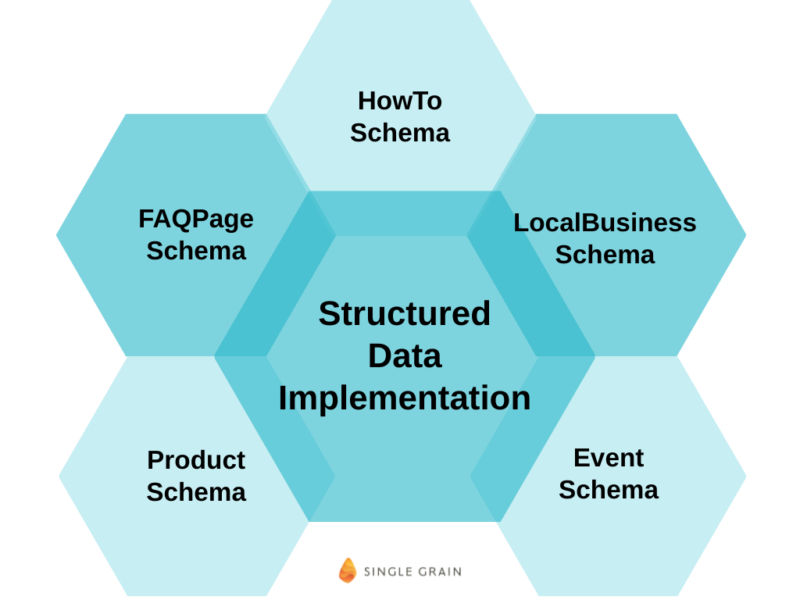
Question Optimization
Zero-click searches often begin with questions. Optimizing for these queries requires:
- Question research: Identify common questions in your industry using tools like Answer the Public, Google’s “People Also Ask” boxes, and customer support inquiries
- Direct answer format: Provide clear, concise answers within the first 50-100 words of content
- Answer clustering: Group related questions and answers to build topical authority
- Conversational language: Use natural phrasing that matches how people ask questions verbally
This approach aligns with how modern search engines process and extract information for direct answers. By structuring content around questions, you increase the likelihood of appearing in featured snippets and voice search results.
Mobile and Voice Optimization
With over 75% of mobile searches resulting in zero clicks, mobile-specific AEO tactics are essential:
- Concise, scannable content optimized for smaller screens
- Location-aware content for “near me” searches
- Voice-friendly phrasing that matches natural speech patterns
- Quick-loading pages to improve mobile user experience signals
- Mobile-specific schema implementation
Voice search optimization deserves special attention, as these queries are inherently zero-click. Successful voice optimization requires understanding the conversational nature of voice queries and providing succinct, authoritative answers.
Technical Implementation of AEO: Beyond the Basics
While understanding the strategic elements of AEO is important, implementation requires specific technical approaches:
Schema Markup Deployment
Implementing schema effectively involves several considerations:
- JSON-LD format: Google’s preferred method for schema implementation
- Testing: Use Google’s Rich Results Test and Schema Markup Validator
- Nested schemas: Create relationships between different schema types
- Dynamic implementation: Generate schema automatically for large sites
For organizations with larger websites, consider leveraging AI tools for SEO that can automatically generate and deploy schema markup at scale.
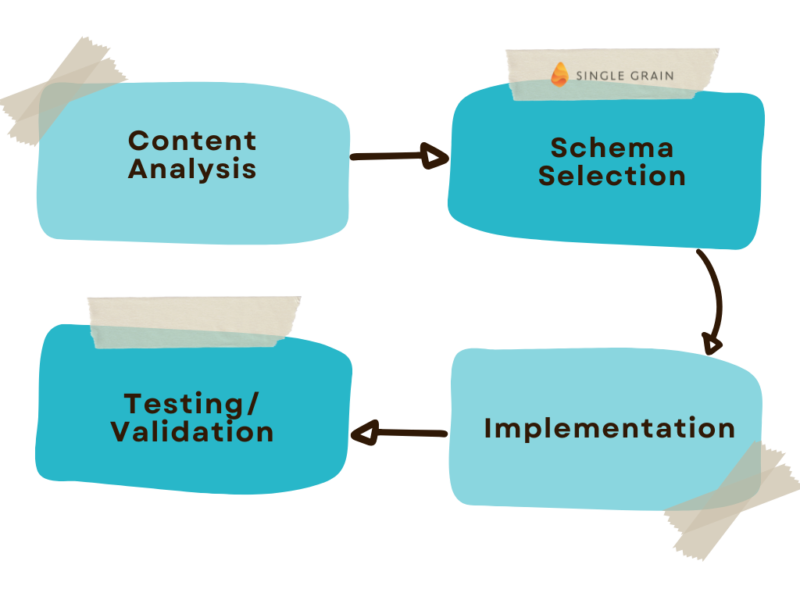
Content Restructuring for Answer Extraction
Restructuring existing content for better answer extraction involves:
- Breaking long paragraphs into scannable sections
- Using descriptive subheadings in question format
- Creating dedicated FAQ sections on key pages
- Providing clear, concise definitions for industry terms
- Using bullet points and numbered lists for processes
This restructuring makes it easier for search engines to identify and extract answers, increasing your chances of appearing in zero-click environments.
Measuring AEO Success Beyond Clicks
Traditional metrics like traffic and clicks don’t adequately capture AEO success. Instead, focus on:
- SERP feature tracking: Monitor featured snippet appearances
- Brand impression data: Measure Search Console impressions
- Brand search volume: Track branded query increases
- Click-independent conversions: Measure direct searches after SERP exposure
- Share of voice: Calculate your visibility compared to competitors
A comprehensive enterprise SEO metrics approach should incorporate these AEO-specific measurements alongside traditional KPIs.
The Real-World Impact of AEO on Brand Performance
The benefits of AEO extend beyond theoretical visibility improvements. Organizations implementing comprehensive AEO strategies are seeing measurable business impact:
Case Study: Major Consumer Brand
- Challenge: A reduced click-through trend was observed as zero-click search results delivered direct answers, impacting traditional organic traffic metrics.
- Solution: Leveraged structured data optimization — including FAQ and HowTo schema markups — to craft precise, answer-ready content that enhanced visibility in featured snippets and knowledge panels.
- Results: Reported a 22% increase in brand impressions and a 16% rise in direct/assisted conversions over six months, underscoring better performance in zero-click contexts.
- Key Takeaway: Structured data not only preserves brand visibility in zero-click environments but also contributes to improved overall conversion metrics.
This case highlights an important reality: effective AEO doesn’t just maintain visibility—it can actually enhance overall marketing performance by creating multiple touchpoints with potential customers.
The Future of AEO in an AI-Driven Search Landscape
The evolution of search isn’t slowing down. As AI plays an increasingly central role in search experiences, AEO strategies will need to adapt:
- AI-generated search responses: Optimizing for AI training datasets becomes critical
- Multimodal search: Preparing content for image, voice, and text-based queries simultaneously
- Personalized zero-click results: Creating content variations for different user intents
- Entity-based optimization: Building content around semantic entities rather than keywords
As AI tools like SearchGPT reshape how users discover information, brands must stay ahead of these trends to maintain visibility in an increasingly complex search ecosystem.
Embracing AEO as a Core Marketing Strategy
Zero-click searches aren’t going away. With projections suggesting that over 70% of searches will be zero-click by 2025, AEO is now essential for maintaining digital visibility.
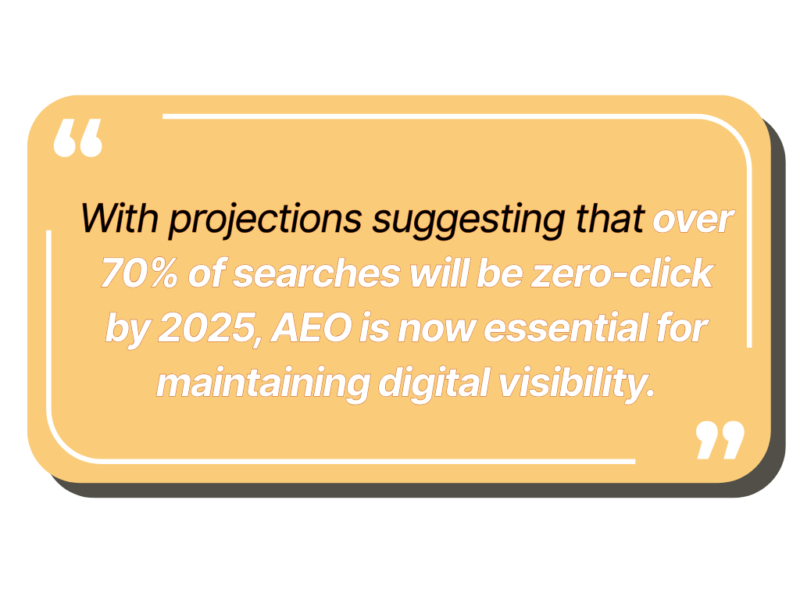
The shift from traditional SEO to a combined SEO/AEO approach represents more than just a tactical adjustment—it’s a fundamental reimagining of how brands connect with audiences through search. By implementing the strategies outlined in this article, you can ensure your brand maintains visibility and delivers value even when traditional clicks decline.
As zero-click search behaviors continue to evolve, the organizations that adapt quickly will gain significant advantages. Those that don’t risk becoming invisible in an increasingly crowded digital landscape. The question isn’t whether to implement AEO strategies—it’s how quickly you can deploy them to stay ahead of the curve.
Ready to transform your search strategy for the zero-click era? Work with the leading AEO agency that has helped major brands like Uber, Amazon, and Airbnb maintain visibility in the changing search landscape.



